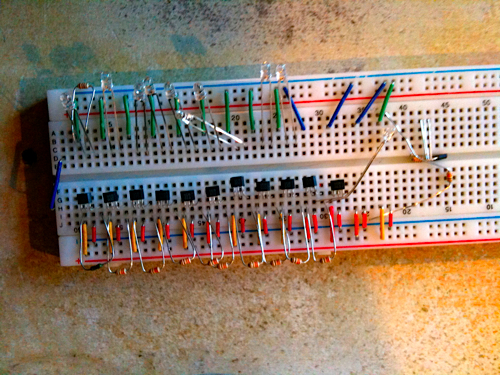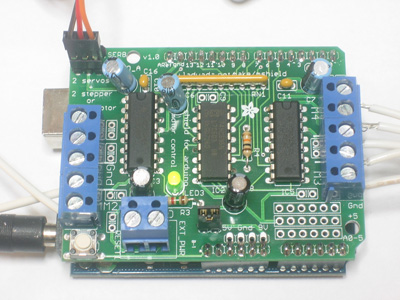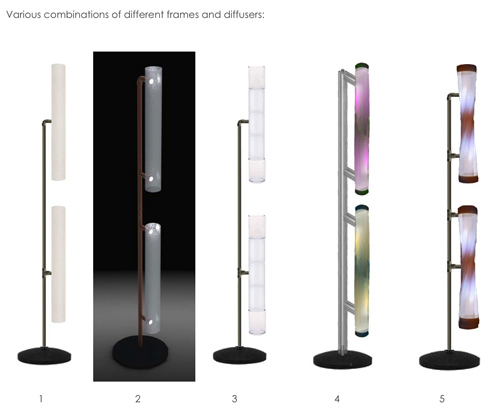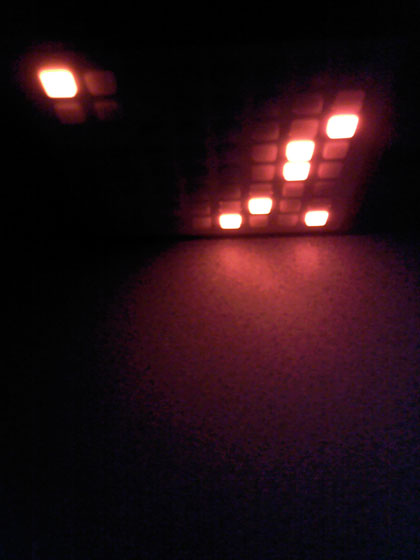Modular Music Box – Hall Effect Sensors

I wanted to test the hall effect sensors I’d bought to see if they could be used for my idea of a rotary magnetic sequencer for the Modular Music Box.
There’s a link to the data sheet and a handy Hall_ Applications_Guide.PDF as well as some useful advice on the Sparkfun Hall Effect Sensor page and in the comments… and the Arduino:Playground provided a bit of code to test the sensor in action…
“You’ve got 3 pins from the front (the triangle edge). Left to right, power, ground, output.
Stick a 10k pull up between 5v and output. Then it’ll latch on/off depending on the poll you use.”

 



